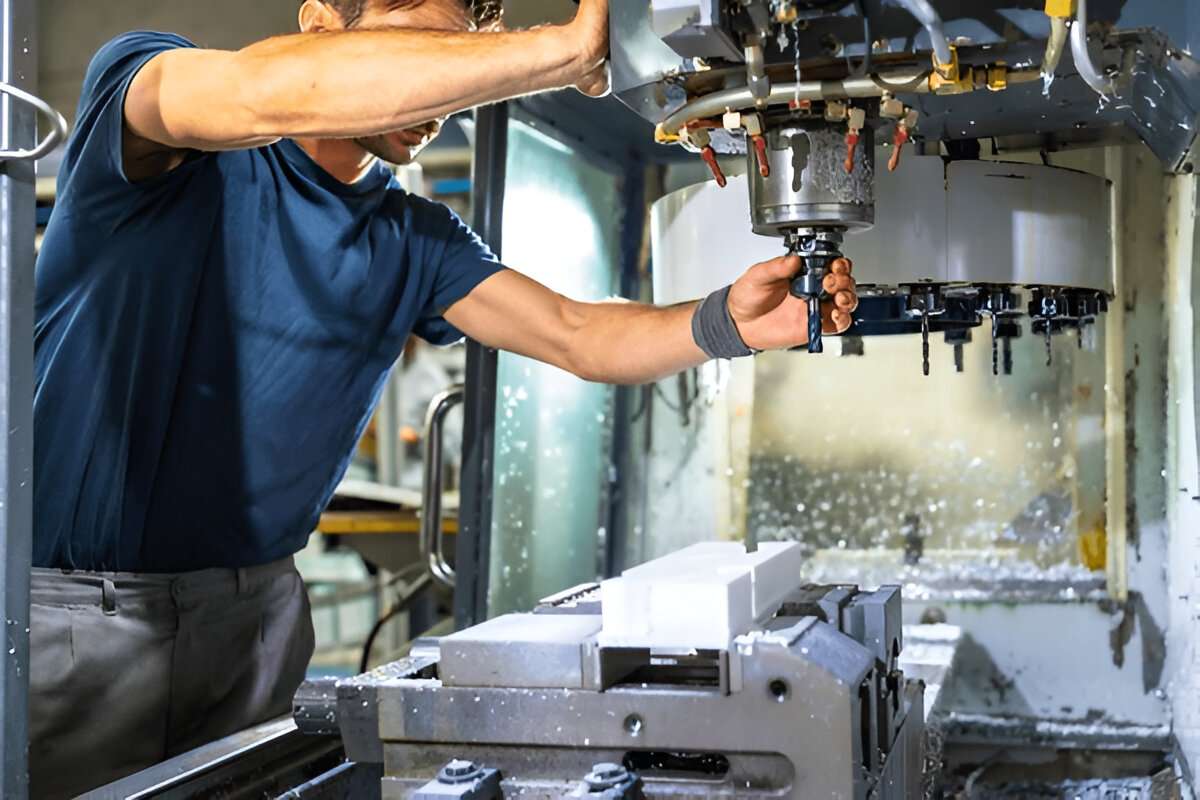Picking the right milling machine can be difficult. There are numerous models and specifications to choose from, which can make the selection process overwhelming. Whether you’re a casual hobbyist or a professional fabricator, you need a pretty sweet cutting machine in your workshop. It increases your precision, accelerates production, and even opens doors to working on different kinds of projects.
But which one to buy, suitable for your space, your budget, and your work? We can break that down into some easy-to-use, small bites.
Understand Your Needs First
Before we get into the specifications, consider your workshop. What do you build most often? Do you work with small, intricate parts or larger pieces of metal? The milling machine you choose will directly correlate with the type of work you do daily.
If you’ll mostly be doing small, accurate work, a benchtop model may suffice. However, if you’re continuously working with large pieces of material, you will need a full-size floor-standing milling machine.
Consider the materials, too. What kind of material are you milling (aluminum/steel, wood, plastics, other)? On some machines, soft metals and wood are no problem, but tougher stuff is a chore to cut. Make sure your machine of choice is up to speed.
Size and Space Matter
It’s also true that none of the best milling machines are good if the size is too small for you. See what space you have available, and don’t forget to allow for operation and maintenance. Milling is not only a machine, but it also requires space around the machine to move materials and change tools, as well as space to sweep up chips and shavings.
Also, think vertically. Taller machines need clearance. And don’t overlook the power source. Ensure Your Space Can Handle The Electrical Demands! Many of them are 220V, though. Expect the smaller equipment to work on regular 110V, but you’ll probably need 220V for the larger machines.
Manual vs. CNC Milling Machines
The choice between manual and CNC (Computer Numerical Control) is a significant consideration. With a manual milling machine, you have direct control over the process. You turn the handles, you feel the resistance, and you learn by touch. They are a fantastic tool for both learning and low-volume production.
Go with CNC if you’re aiming for an architecturally sophisticated look, plan to mass-produce, or are meticulous about details; however, this comes at a greater cost and with a steeper learning curve.
Pay Attention to Spindle Power
The strength of the spindle determines how well the milling machine will react when working on tougher materials. Deeper cuts and faster milling are made possible by higher horsepower. If you’re dealing mostly with stainless steel or other denser alloys, opt for a machine with at least 1.5 HP. For minor jobs, a smaller power machine can be used.
Don’t overlook spindle speed. The broader the range, the more flexibility you have. You can let up on tough materials or forge ahead for a fine finish.
Tooling Compatibility Is Crucial
All milling machines need a tool to hold their cutter and connect it to the power supply. Ensure the machine you buy uses the standard sizes. If it needs obscure or expensive accessories, you may live to regret it.
Think long-term. The more varied the tooling options, the more you can accomplish with the same machine. Look, if the model is upgradable in the future. Is it possible to cnc the frame in the future? Can the head be swapped out or attachments added to it?
Build Quality and Brand Reputation
A quality milling machine will last you for years. Opt for cast iron or steel construction. Avoid too much plastic. A solid, rigid frame minimizes vibration and delivers consistent accuracy.
Brand reputation also matters. Brands with a legacy tend to offer better support, longer warranties, and easier access to replacement parts. Read reviews, get on forums, and talk to other machinists. Real-world feedback is the gold in your decision-making.
Budget Wisely, Not Just Austerely
Everyone has a budget. But avoid getting the cheapest machine, just to save money. You may find it doesn’t offer the strength, features, or longevity you require. That being said, you don’t have to be the most expensive model either.
Let’s move to a sensible interval and try to find the optimal ‘in-between’. Consider the long-term return on investment. Some people have had the same milling machine for decades. By making a larger upfront investment, you can save time, frustration, and replacement costs down the line.
Safety and Maintenance
Never think of safety as something to consider only afterward. Select a milling machine that has guards, emergency stops, and adequate shielding. Take a look to see if spare parts are available. Performing routine maintenance will help your machine continue to run smoothly and avoid expensive repairs.
Be sure you know how to clean, lubricate, and check it frequently. High-quality machines come with comprehensive manuals and reliable support. That means more fodder and less downtime.
Make a Confident Choice
Selecting the right milling machine is about balance. Understand what you need, plan for the future, and accept no substitutes. Consider what you’re building today — and what you hope to develop tomorrow. A good machine enables you to achieve your goals and scales with you.
Take your time. Ask questions. Visit stores if you can. Feel the handles, play with the controls, and picture yourself using it every day. You’ll know when you find the right fit.


